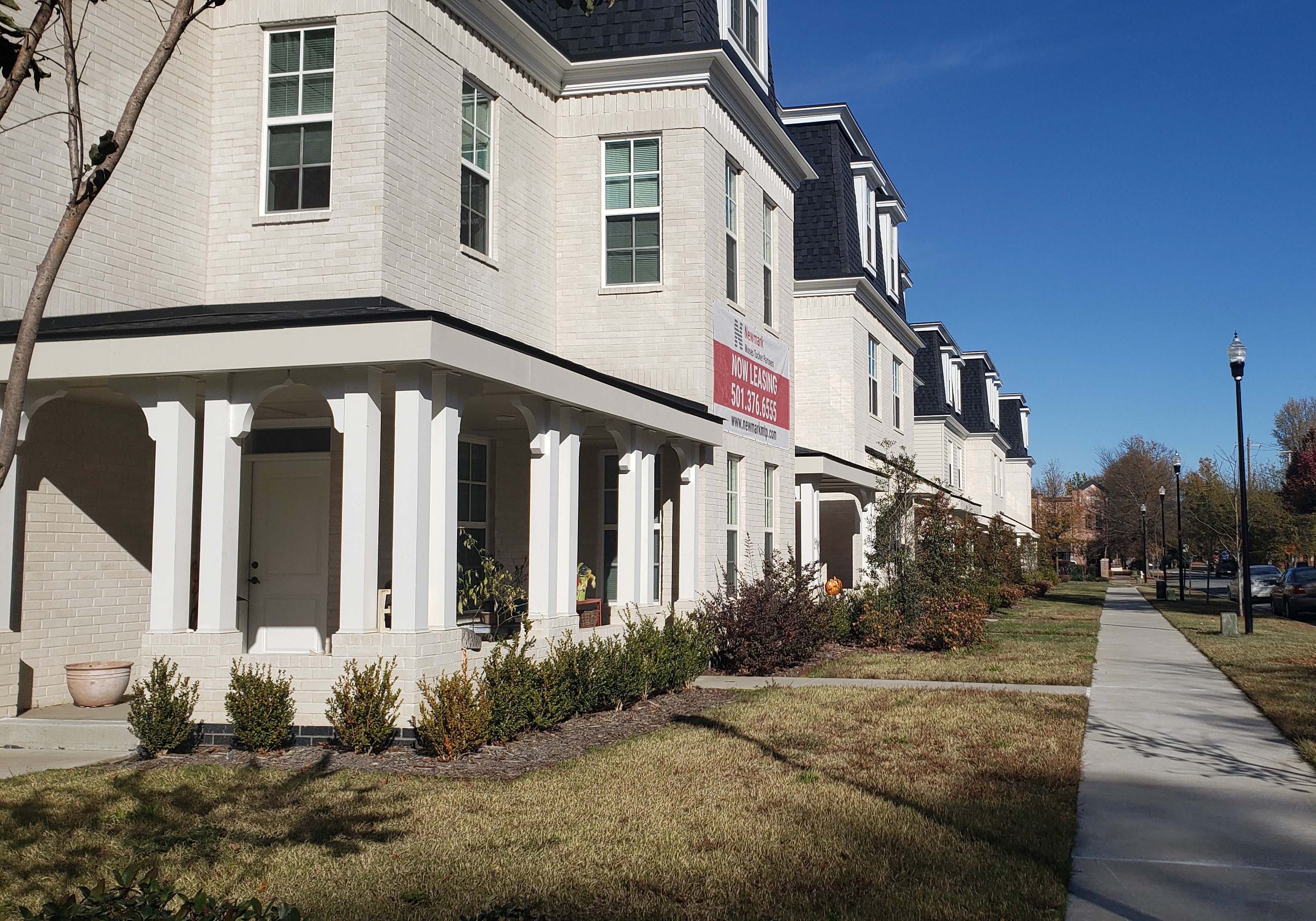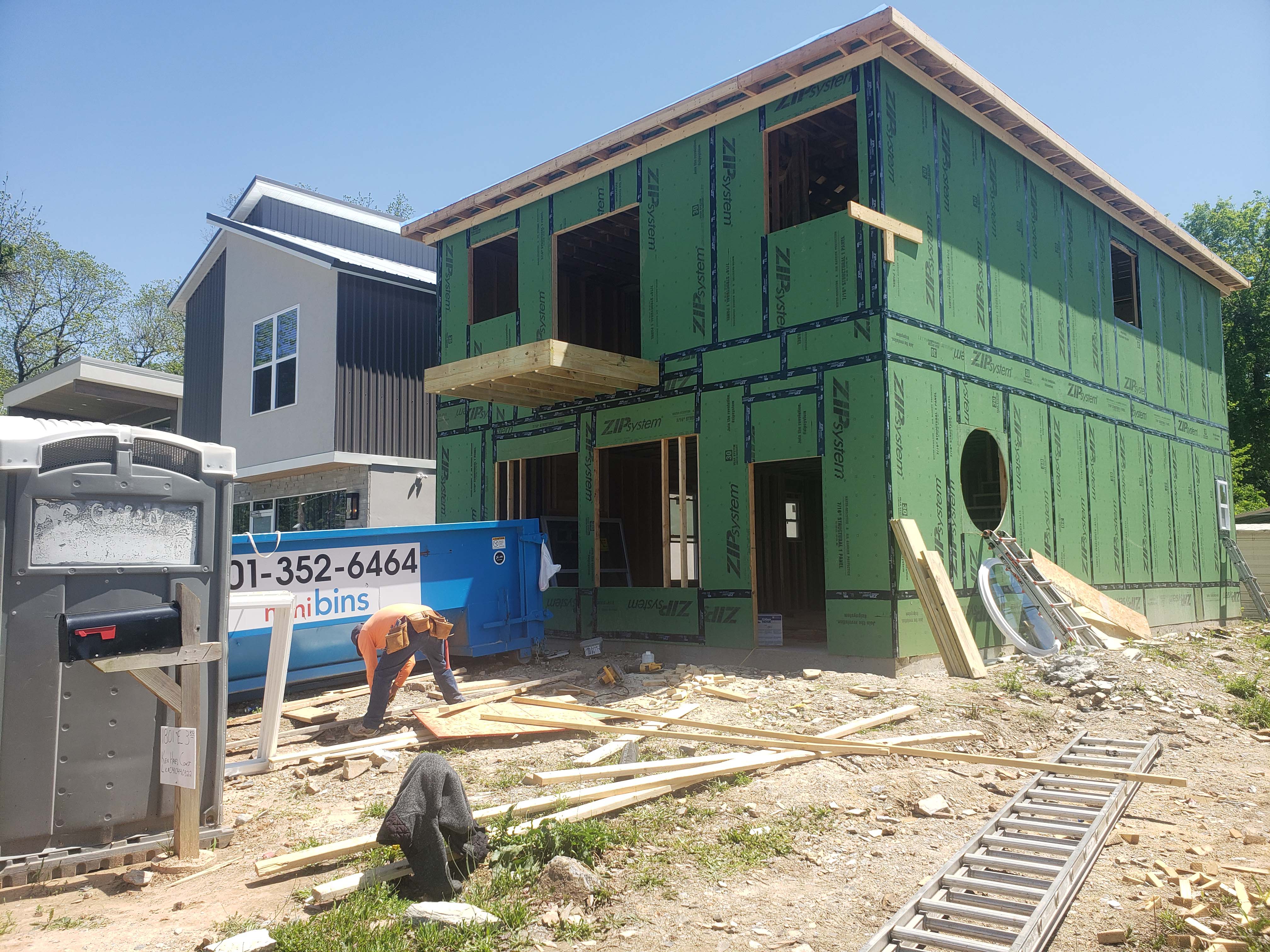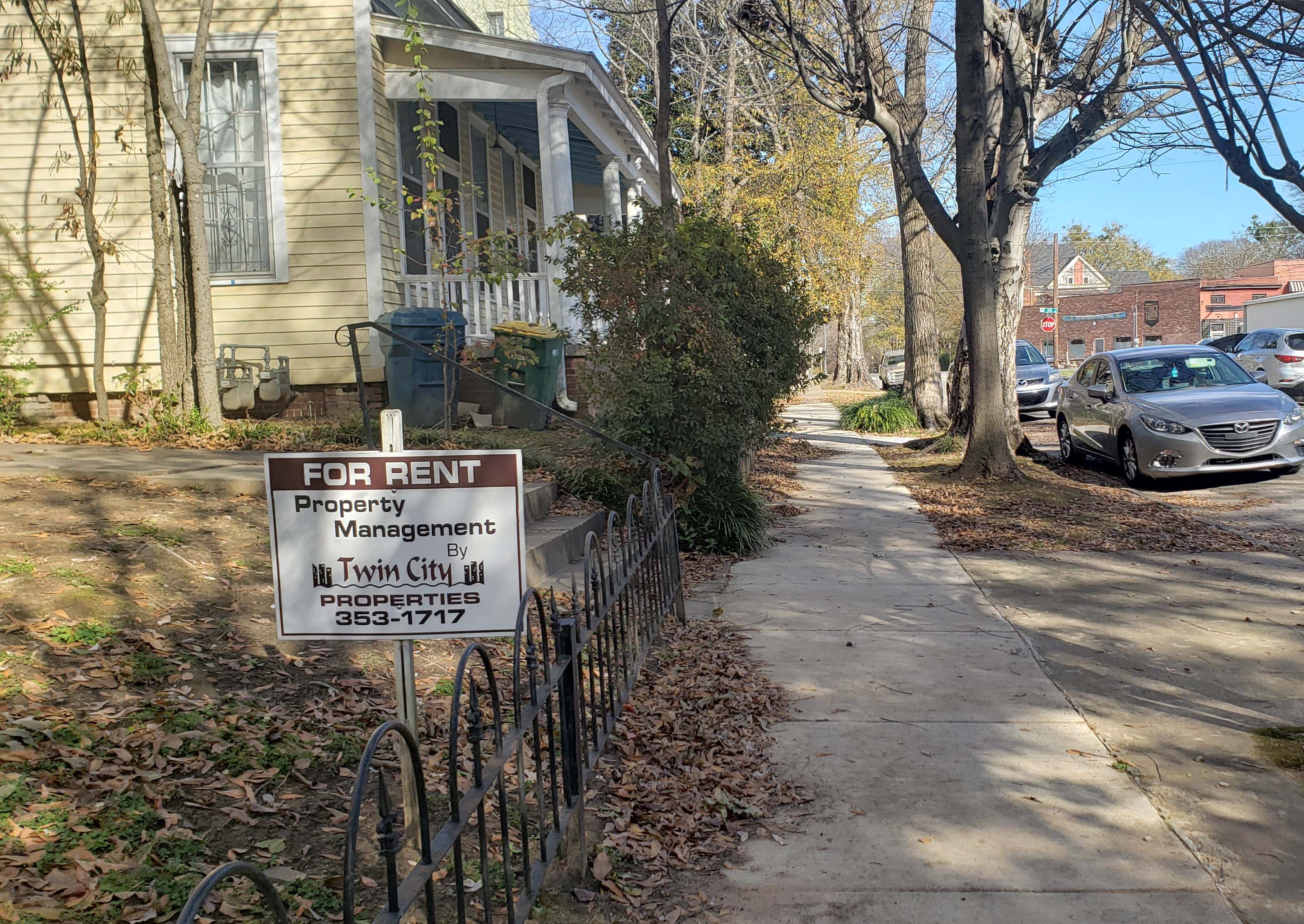Rental Reality: Arkansas tenants still burdened with rising costs after COVID-10 shutdown
December 26 - January 1, 2023
As the rising mortgage prices delay new home buyers from entering the housing market, low-income and working families in Arkansas and across the U.S. are also facing similar high costs in the rental space.
According to an American Community Survey (ACA) report by the U.S. Census Bureau, over 19 million U.S. renter households spent more than 30% of their income on housing costs in 2021. That report, which is culled from U.S. census estimates over the past fives years, considers households as “cost burdened” when they spend more than 30% of their income on rent, mortgage and other housing needs.
The burden was especially high in some of the nation’s largest counties where housing is more expensive or in areas where incomes are low, including over 30 counties in Arkansas where renters spend more than 30% of their income on their monthly housing needs.
For example, Lee County in the Arkansas Delta has the highest cost burden in the state with a median housing cost ratio for renters is 50%, ACA data shows. One of the least populated counties in Arkansas, Lee County has only 776 rental units out of the 2767 housing dwellings. Over the past decade, the number of residents residing in the county has declined to just 9,000 from 10,500 , according to 2020 Census data.
By comparison, there are 65,432 units in Pulaski County where the median monthly housing ratio for the average renter is 29.2%. There are nearly 165,000 housing residences for the nearly 400,000 people that now live in the state’s largest county, including over 65,000 units for rent, according to ACA data compiled by the U.S. Census Bureau.
In its recent Dec. 8 report, the ACA said it collected a variety of housing cost information for renters, including monthly rent and utility bills. For homeowners, the Census Bureau research group compiles its data from homeowners’ mortgage principal and interest, real estate taxes, insurance, utilities, mobile home costs, second mortgage payments and condominium fees, if applicable.
And now after the Federal Reserve’s Open Market Committee (FOMC) raised the federal funds rate to the range of 4.25%-4.5% earlier this month, many economists are predicting a mild recession in 2023 as the housing market hits the breaks until mortgage prices are more affordable. The Fed hikes mark the seventh consecutive rate hike this year and takes interest rates back to levels not seen since late 2007 and early 2008. Nine months ago, rates were still at a rock-bottom level of near 0%.
New Wall Street projections show that many economists are predicting that the FOMC will raise interest rates to well beyond 5% in 2023. That federal fund rate is the interest rate that banks charge other institutions for lending excess cash to them from their reserve balances on an overnight basis. Since the rate hike on Dec. 14, most U.S. banks have raised their prime interest rates to 7.5%, which will increase the credit and interest costs for small business loans, lines of credit, car loans, mortgages and credit cards.
Lawrence Yun, chief economist and senior vice president of research for the National Association of Realtors, forecasts that 4.78 million existing homes will be sold, prices will remain stable, and Atlanta will be the top real estate market to watch in 2023 and beyond. Yun unveiled the forecast for the nation’s largest trade and most influential trade group on Dec. 13 during NAR’s fourth annual year-end Real Estate Forecast Summit.
Yun predicts home sales will decline by 6.8% compared to 2022 (5.13 million) and the median home price will reach $385,800 – an increase of just 0.3% from this year ($384,500). “Half of the country may experience small price gains, while the other half may see slight price declines,” Yun said. “However, markets in California may be the exception, with San Francisco, for example, likely to register price drops of 10–15%.”
POST-PANDEMIC RENTAL CRISIS EASING, BUT PRICES STILL UP
Concerning rental prices, Yun expects prices to increase by 5% in 2023, following a 7% spike in 2022. According to the highly watched Waller, Weeks and Johnson Rental Index by Florida Atlantic University and two other schools, more of the nation’s largest metropolitan areas posted monthly declines in rent through October, further proof that the rental crisis is easing across the nation.
In October, 70 housing markets had smaller average rental rates, up from 38 in September. Springfield, Mass.; Austin, Texas; Seattle and New York are among the metros where rents are falling. The U.S. average rental rate was $2,040, down 0.9% percent from September.
“It seems that an increase in supply helped relieve the pricing pressure on rental units around the country – and that’s exactly what had to happen,” said Ken Johnson, Ph.D., an economist in FAU’s College of Business. “The added supply appears to have come from delivery of units under construction, an increase in unit density and the conversion of many Airbnb-type units to long-term rentals.”
Despite the slowdown, rental rates remain elevated in some markets, particularly in Florida and other southern states. Cape Coral-Fort Myers led the U.S. in both the largest year-over-year rental increase (17.16%) and the largest premium at 17.37%. A premium is the amount above the long-term leasing trend that renters must pay. Rents typically increase only 3% to 5% a year.
In Little Rock, which the FAU cites as the 34th most affordable market in the U.S., the average rent is $1,140.25 per month. That rental rate is up 6.25% from a year ago, but still a 7.45% discount to what the price should be.
Bennie Waller, Ph.D., of The University of Alabama’s Culverhouse College of Business, said the national data reveals that much of the large rental increases are coming from six and 12 months ago. The Waller Weeks & Johnson Rental Index, which covers the entire stock of homes and apartments, uses easing data from Zillow’s Observed Rental Index to determine existing rents and statistically model historical trends from 2014.
“Within the past month or two, rents are slowing and returning to a more normal year-over-year trend,” he said. “It’s clear that much of the country is starting to shake off these large increases, which have been so devastating to consumer budgets.”
Despite the slowing prices, Arkansas renters have seen some of the nation’s highest increases during the height of the pandemic and well into 2022. Through November, Arkansas renters are paying on average about $989 per month, which is up 17% from $821 a year ago.
Likewise, the so-called “fair market rent” (FMR) compiled by the U.S. Department of Housing and Urban Development (HUD) is also going up. The FMR is not the price the average renter pays, but the amount HUD considers is needed to lease privately owned housing of modest means with suitable amenities and is decent, safe and sanitary.
In Arkansas, the FMR ranges from $509 for a studio apartment to $1,100 for a four-room apartment for a working-class family. In the Little Rock metro area, the FMR ranges from $790 for an efficiency apartment to $1,468 for a four-bedroom rental space.
In September, HUD released its fair market prices for fiscal 2023. According to HUD officials, FMRs will increase by an average of approximately 10%, which ironically will enable more households with housing vouchers to access affordable, stable housing. For 2023, HUD used private sector data to estimate changes in FMRs to address a temporary data availability challenge and to align with market conditions.
“One of the reasons that housing voucher holders are unable to use those vouchers is because the value of their vouchers has not kept up with rapid rent increases,” said HUD Secretary Marcia Fudge. “These new FMRs will make it easier for voucher holders facing this challenge to access affordable housing in most housing markets, while expanding the range of housing opportunities available to households. The new FMRs reflect the reality of housing unaffordability for many households, while supporting our efforts to improve affordability and accessibility for all Americans.”
Meanwhile, the U.S. Census Bureau data shows that out of the 44 million renter households, the vast majority (41 million) paid rent and had household income. In 239 or 7.6% of the nation’s 3,143 counties, more than half of renter households that paid rent and had a household income faced housing cost burdens.
Among them are some of the most populous U.S. counties like Harris County, Texas, and Los Angeles County, California. Over 15.8 million renters, roughly one-third of all renter households in the nation, lived in these 239 counties. In contrast to the prevalence of burden faced by renters, the median housing cost ratio for homeowners rarely topped 30%, and homeowners with and without a mortgage frequently had lower overall housing costs than renters.
Homeowners in only 18 counties – less than half a percent of all counties – had a higher housing cost ratio than renters. In fact, there were only two counties where the median housing cost ratio for homeowners with a mortgage was above 30% were Taliaferro County, Ga., and Trinity County, Calif.
Nearly half of the counties where renters had the highest median housing cost ratios were in the South. Florida, Louisiana, Texas, and Mississippi were among the states with the largest number of counties where renters’ median housing costs exceeded 30% of their income.
The rising rental costs could be highlighted again when the Arkansas 94th General Assembly convenes in Little Rock on Jan. 9. In each of the past three general sessions, legislation to revise Arkansas’ tenant/landlord law has died in committee or failed to advance to the House or Senate floor for a vote.
In Arkansas, a landlord is not obligated for providing a habitable living space. Arkansas is also the only state in the U.S. where rental units come in “as is” condition and there are no laws governing an “implied warranty of habitability.”
In the 2021 session, House Bill 1563 by Rep. Jimmy Gazaway, R-Paragould, was introduced to the House Insurance and Commerce Committee amid the frequent criticism that Arkansas is the only state in the U.S. that provides for the criminal prosecution of tenants who are late on rent payments.
Under Gazaway’s bill, the Arkansas Residential Landlord-Tenant Act of 2007 would have been amended to require minimum habitability standards for tenants of residential rental properties. Among many things, HB1563 would have required all residential rental properties to be structurally sound and have working locks, plumbing, electricity and heat, along with a few other basic living standards.
After several rounds of private meetings with supporters and opponents, the bill was retooled several times to omit certain noncompliance references concerning landlords in the six-page bill. More than two months after it was introduced in late February. Gazaway’s bill died on the House floor when the legislature adjourned sine die on April 30, 2021.
Since bill pre-filing for the upcoming 94th General Assembly began on Nov. 15, 41 bills have been submitted in the Arkansas House and six in the Senate. To date, no legislation has been filed to revise the state’s landlord-tenant for the first time in 15 years.
1. Arkansas tenants still burdened with rising costs after COVID-19 shutdown.
2. Under HUD’s “fair market rent” calculation, rent for suitable housing in Arkansas ranges from $509 for a studio apartment to $1,100 for a four-room apartment for a working-class family. The FMR is not the price the average renter pays, but the amount HUD considers is needed to lease privately owned housing of modest means with suitable amenities and is decent, safe and sanitary. In the Little Rock metro area, the FMR ranges from $790 for an efficiency apartment to $1,468 for a four-bedroom rental space.
3. U.S. House Speaker Nancy Pelosi (center) joined HUD Secretary Marica Fudge (right), and San Francisco Mayor London Breed (left) at the HOPE SF, Sunnydale Site for a press event in late 2021 highlighting critical provisions in the Build Back Better Act that tackle housing equity. In September, HUD released its fair market prices for fiscal 2023 that will increase by an average of approximately 10%, which will enable more households with housing vouchers to access affordable, stable housing.
4. Federal Open Market Committee (FOMC) participants at the William McChesney Martin Jr. Building in Washington, D.C., during a two-day meeting held Dec. 13-14, 2022. After the meeting, Federal Reserve Chairman Jerome Powell (center) said the nation’s central bank decided to raise the target range for the federal funds rate to the range of 4.25% and 4.5% and anticipates that ongoing interest rate hikes in 2023 to return inflation to 2% over time.
5. Below: In the wake of the Covid-19 pandemic, rental rates across the United States have soared to record highs. The U.S. average rental rate was $2,040, down 0.9% from September, according to the Florida Atlantic University’s (FAU) monthly Waller, Weeks and John Rental Index. To help demonstrate the rise in rents, FAU index ranks the most overvalued rental markets from among the nation’s largest metropolitan areas.







